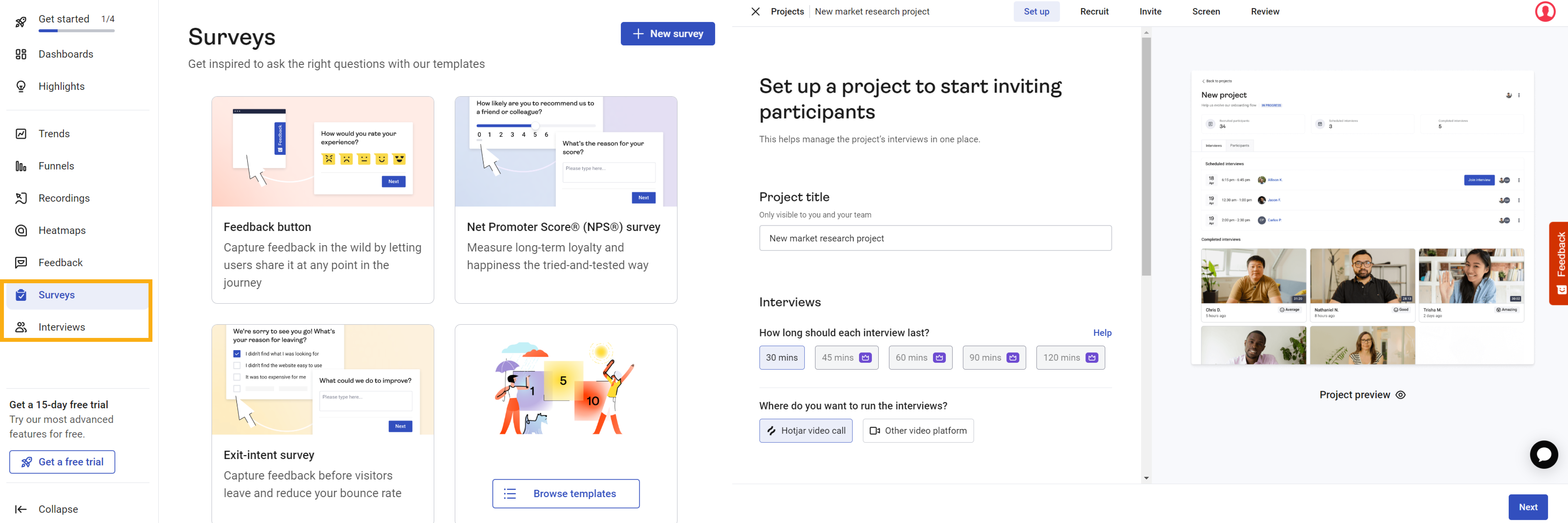Fullstory vs Hotjar: Which session recording tool is best for your team?


In today’s web-based products, when we want to understand how users interact with our product, apart from close observation through Usability Tests, there exists another more quantitative and quick method to gather user behavior — Session Recording tools.
This article compares two well-known Session Recording tools — Fullstory and Hotjar, to evaluate when it’s more suitable to choose Fullstory despite its higher cost and learning curve.
Basic Concept
Session Recording works similarly to Google Analytics (GA), where tracking codes embedded in the website’s source code record each visitor’s visit (session). The data includes:
- Visited pages
- Button Clicks
- age scroll behaviors
These data can be replayed chronologically, simulating a video of user interactions.
Advantages of Fullstory
- Data charts connected with Session Recording
After watching users’ actions one by one, we may need to further define key CVR Events and use statistical data to validate whether the user pain points we discovered are significant enough. Fullstory allows us to set CVR Metrics or Funnels and directly view Session Recordings with or without completed conversions, verifying the accuracy of our filter settings.

- Session Record to Heatmap
While watching Session Recordings, we can switch to Page Insights to view heatmaps, which are quickly generated by clicks and scrolls without prior setup. This makes it convenient for understanding page usage.
To view heatmaps in Hotjar, you need to independently set up pages to track and wait a few days to collect data. Fullstory’s advantage here is that I can decide which pages’ heatmaps to observe while watching Session Recordings, allowing for immediate interaction and comparison without additional wait time.
- Defining Events and Elements with Specific Parameters
In Session Recordings, we can directly switch to Inspect mode, select specific UI elements (buttons, hyperlinks), and name them as specific elements. Later, UI elements that match this CSS selector will be displayed with that name in Session Recordings.
Similarly, user events with parameters or specific page URLs can also be named accordingly. This helps us track these recordings long-term or quickly use these events and elements in charts.

- Cross-Platform Support (Android/iOS)
Fullstory supports multiple platforms, making it more practical for companies needing to track both Android and iOS.
Advantages of Hotjar
- Transparent pricing
Hotjar provides publicly available pricing plans, which are more flexible than Fullstory’s enterprise-only subscription model. - Shorter learning curve
I have dozens of hours of experience using Hotjar, GA, and GTM, but it still took me around 20 hours to gradually get the hang of Fullstory. For beginners, Hotjar’s user interface is easier to start with. - Built-in surveys and User Interviews
Product teams can use Hotjar’s built-in survey and User Interview features for qualitative research. The benefit is mapping survey respondents’ IDs with Session Recordings collected earlier, without needing additional plugins like Survcate for pop-up surveys or video recording for Usability Tests. In contrast, Fullstory does not offer these research features.

Conclusion
When choosing a Session Recording tool, both Fullstory and Hotjar have their advantages. Fullstory provides more robust data analysis, tracking, and validation capabilities, and supports cross-platform functionality. Hotjar, on the other hand, is more user-friendly for beginners and has transparent pricing.
Additionally, after obtaining Session Recordings, is the product team conducting qualitative research or establishing metrics for quantitative analysis? This is a significant difference in choosing between Hotjar and Fullstory.
Depending on the product team’s scope (exploring small products or focusing on conversion rates of specific modules), you can choose the tool that best suits your needs. Since I mainly use Fullstory in my work and have accumulated a lot of experience, I plan to organize some operational methods and tips in future articles.”
